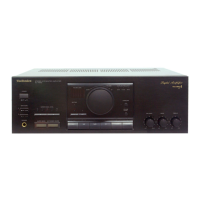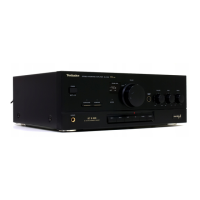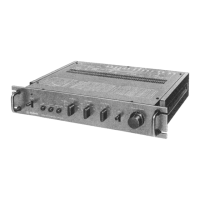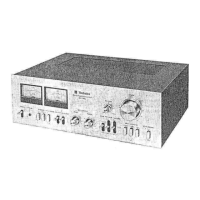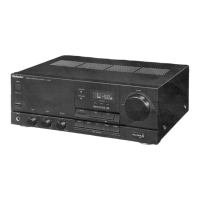
Do you have a question about the Technics SU-X977 and is the answer not in the manual?
| Power output per channel | 100 W (8 ohms) |
|---|---|
| Damping Factor | 100 |
| Input Sensitivity | 150mV (line) |
| Dimensions | 430 x 130 x 360 mm |
| Channel separation | 70 dB |
| Speaker load impedance | 8 ohms |
| Power Output | 100W per channel (8 ohms, 20Hz-20kHz, 0.02% THD) |
| Frequency Response | 5Hz-100kHz (+0, -3dB) |
Safe use of AC outlets, DC power sources, and rear panel outlet.
Proper handling of the power cord, including disconnection and avoiding damage.
Guidelines for placing the unit for ventilation, stability, and environmental conditions.
Warnings against repair, child access, water spills, chemical use, and malfunction procedures.
Details connecting turntables, tuners, CD players, and tape decks using various cable types.
Explains the CD input selector and the use of digital input terminals with optical cables.
Describes the function of GND, EXT, and Remote Control terminals for specific components.
Details connecting flat cables and AC power cords for system components.
Explains the functionality of switched and unswitched AC outlets on the components.
Details connecting other audio equipment like CD players, DAT decks, and tape decks via AUX, DAT, and TAPE 2.
Guides on connecting speaker systems to A, SURROUND, and B terminals, noting impedance.
Provides instructions on how to properly strip and connect speaker wires to terminals.
Explains the power switch operation and how to select speaker systems (A/B/Surround).
Details the main volume control, temporary muting function, and volume level indicator.
Describes activating surround sound, reinforcing bass, and selecting audio input sources.
Explains adjusting left/right balance, bass/treble tone, and connecting headphones.
Step-by-step guide for basic operation: power, speaker selection, input, component operation, and volume.
Precautions for using headphones, including volume adjustment and sound quality.
How to use SURROUND, SUPER BASS, MUTING, BALANCE, TREBLE, and BASS controls.
Steps for recording from sources like CDs, tape decks, and DAT decks.
Guides on tape-to-tape recording and automatic recording synchronization.
Explains the convenience of changing performances without using the input selector.
Explains the benefits of digitizing audio signals to prevent deterioration.
Details the process of sampling, quantifying, and encoding analog signals.
Illustrates the digital conversion process for recording to CD and CD playback.
Defines sampling frequency and its role in digital audio quality.
Explains the process of converting analog signals into digital format.
Explains the process of converting digital signals back to analog for playback.
